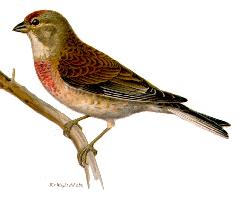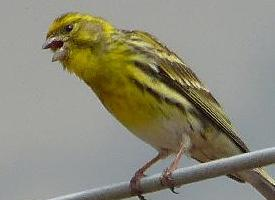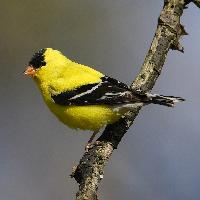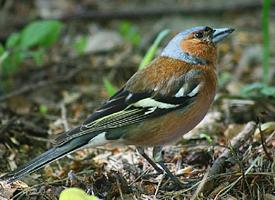
Poids et mesures
| Longueur | 13 cm |
|---|---|
| Poids | de 15 à 22 g |
| Envergure des ailes | de 71 à 85 mm |
Description de l'animal
The Common Linnet (Linaria cannabina) is a small passerine bird that belongs to the finch family, Fringillidae. It is well-known for its melodious song and striking plumage, which varies significantly between males and females, especially during the breeding season. This bird species is native to Europe, western Asia, and North Africa, though its range has expanded through introductions to other regions such as Australia and New Zealand.Adult males in breeding condition are particularly striking with their warm red breast and forehead, contrasting beautifully with their grey head and brown back. The wings and tail are predominantly dark with some white edges, which become more pronounced during flight. Outside the breeding season, the male's plumage becomes more subdued, resembling the female's coloration, which is generally more muted with an overall sandy-brown appearance, less distinct red coloring, and similar dark wing and tail markings.
Common Linnets have a length of approximately 13.5 to 15 cm (5.3 to 5.9 inches) and a wingspan ranging from 20 to 25 cm (7.9 to 9.8 inches). Their size and shape are typical of finches, with strong, conical beaks designed for cracking seeds, which constitute the majority of their diet. Although seeds form the bulk of their diet, during the breeding season, they also feed on insects to provide additional protein for their growing chicks.
These birds are often found in open landscapes, such as heathlands, farmland edges, parks, and gardens, where they can forage for seeds on the ground. They show a preference for areas with a mix of vegetation, including bushes and trees, which offer both food sources and nesting sites. The Common Linnet builds its nest in dense shrubs or low trees, skillfully constructing it from twigs, grass, and moss, and lining it with finer materials. The female typically lays 4 to 6 eggs per clutch, which she incubates for about two weeks before the chicks hatch.
The song of the Common Linnet is a delightful mix of trills, twitters, and melodic phrases, which can be heard throughout the breeding season as males sing to attract mates and defend their territories. Both males and females also communicate with a series of calls that serve different purposes, including alarm calls and contact calls between members of a flock.
Despite its beauty and the joy it brings to birdwatchers, the Common Linnet has faced declines in parts of its range due to habitat loss, agricultural intensification, and the use of pesticides, which reduce the availability of seeds and insects. Conservation efforts are underway in some areas to preserve the habitats crucial for the survival of this and many other bird species.
In summary, the Common Linnet (Linaria cannabina) is a charming and colorful bird, celebrated for its beautiful song and vibrant plumage. It plays an important role in various ecosystems, acting as both a seed disperser and a prey item for larger animals. Understanding and protecting the natural habitats of the Common Linnet is essential for ensuring its continued presence in the wild.
Animaux similaires
Nouvelles photos d'animaux
Top 10 des animaux
- Dolphin gull (Leucophaeus scoresbii)
- Diana monkey (Cercopithecus diana)
- Moustached guenon (Cercopithecus cephus)
- Galápagos tortoise (Geochelone nigra complex)
- Japanese macaque (Macaca fuscata)
- Stone loach (Barbatula barbatula)
- Russian tortoise (Testudo horsfieldii)
- Greek tortoise (Testudo graeca)
- Common flying dragon (Draco volans)
- Vendace (Coregonus albula)


